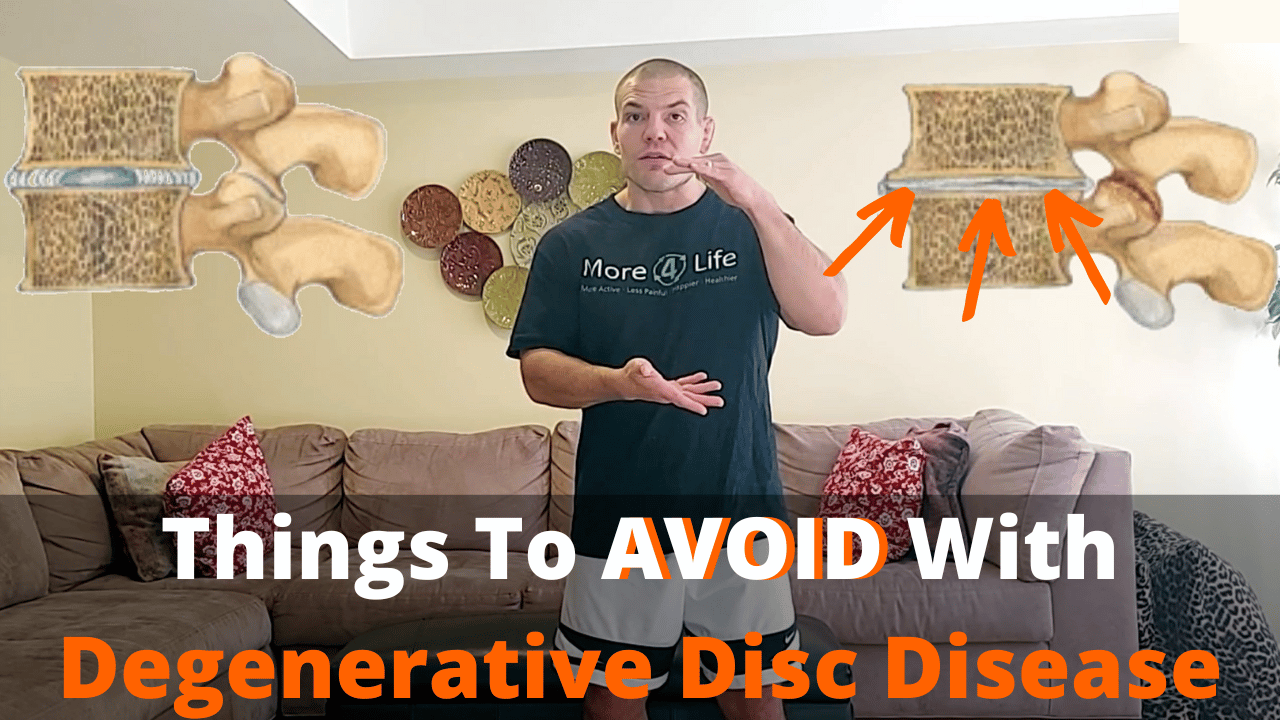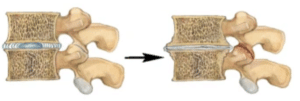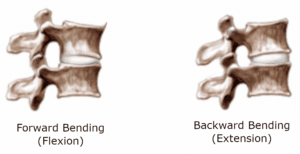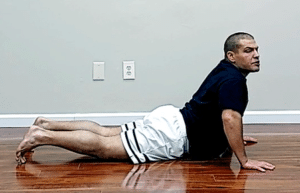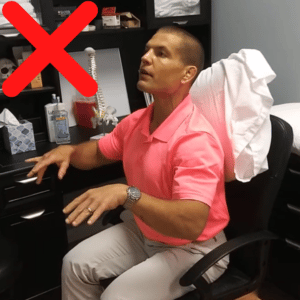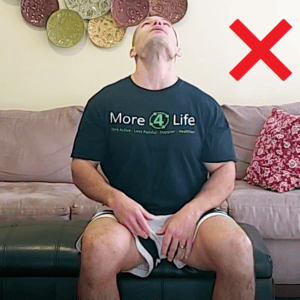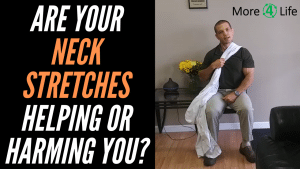Wonder What To Avoid If You Have Degenerative Disc Disease?
Watch the video to learn what things to avoid with degenerative disc disease, plus what to do instead.
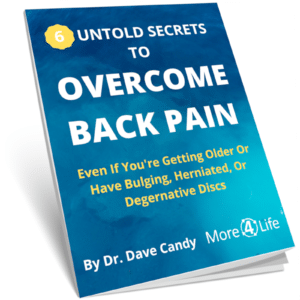
What Is Degenerative Disc Disease?
Degenerative Disc Disease is loss of height of the discs in your spine due to loss of water content in the disc.
As your discs lose height, the spaces between the vertebrae gets smaller. The net effect of this is that the facet joints get pressed against one another and the the spaces where the nerves come out of your spine get smaller.
Degenerative disc disease is a normal feature of aging.
According to a study in the American Journal of Neuroradiology, about 37% of people WITHOUT back pain have disc degeneration in their 20s.
By the 70s, approximately 93% of people WITHOUT PAIN have degenerative discs.
That means degenerative disc disease isn't quite so much a "disease" after all.
However, there are some things to avoid with degenerative disc disease in order to prevent it from causing symptoms.
What Are The Things To Avoid With Degenerative Disc Disease?
When you bend your spine backwards - whether it's your neck or your lower back- this further narrows the spaces where your nerves come out.
Therefore, the things to avoid with degenerative disc disease are activities and positions that bend your spine backwards.
By avoiding backward bending positions, you can avoid further pinching the nerve roots in you neck or back.
Activities To Avoid With Degenerative Disc Disease In Your Back
Sitting, standing, or walking with too much arch in your back can further compress the joints and nerves in your back if you have degenerative disc disease.
The ironic thing is, when people have back pain, they're often told to "stand up straight" or "sit up tall".
However, this has nothing to do with what's good for your spine... it's just been the conventional "wisdom" that's been passed down from generation to generation.
When you have degenerative disc disease, you may try standing up tall or sitting up straight in an effort to make things better.
However, in reality, you may actually be making the problem worse.
If you have degenerative disc disease AVOID intentionally standing, sitting, or walking too upright.
Instead, Try These Things To Help Degenerative Disc Disease In Your Back
- When standing, roll your pelvis underneath of you so that it flattens the curve in your back.
- When sitting, sit all the way back in the chair with feet up on a footrest. The helps flatten your spine and allow your back muscles and hip flexors muscles to relax.
- Lean forward slightly when walking. This helps take pressure off of the joints and nerves when you walk.
- Try wearing a lumbar decompression brace.
This type of brace lifts your spine to take the pressure off of your discs and nerves. You may find when wearing it that you can stand and walk longer without back or leg pain.
These lumbar decompression braces were developed by a company called Disc Disease Solutions. I recommend either the DDS 300 or DDS G2.
For full disclosure, I am an affiliate for DDS, which means I earn a commission when you SAVE 10% using my code DRCANDY10 when you buy direct from DDS.
Of course just like everything else in the world, you can also find them on Amazon.
DDS G2 Decompression Back Support Belt, ...
$160.00 (as of April 25, 2024 16:25 GMT -05:00 - More infoProduct prices and availability are accurate as of the date/time indicated and are subject to change. Any price and availability information displayed on [relevant Amazon Site(s), as applicable] at the time of purchase will apply to the purchase of this product.)
Exercises To Avoid With Degenerative Disc Disease In Back
If you have degenerative disc disease, you should avoid exercises that require backward bending such the cobra pose.
Instead, do stretches that involve bending your back forward or away from the painful side.
Stretch your lower back muscles
Need Help For Degenerative Disc Disease In Your Back?
Tap the button below to request an appointment with one of our back pain specialists
Sleeping Positions To Avoid With Degenerative Disc Disease In Your Neck
Side Sleepers
When you tip your head to one side, it compresses the joints and nerves on one side of your neck.
Therefore, you should AVOID sleeping with either too thin of a pillow OR too thick of a pillow. This pushes your head to one side or the other and can cause neck pain from sleeping.
Instead, you should use a pillow that supports your head in midline.
Back Sleepers
When sleeping on your back, you should avoid having too much arch in your neck, as this also compresses the joints and nerves in your neck.
The funny thing is, most commercial neck pillow are designed to MAINTAIN the arch in your neck. That's good for younger people with necks, but if you're got degenerative disc disease in your neck, you want to AVOID having too much arch in your neck.
Sleeping with two pillows slightly staggered so that your head is pushed up and your neck is flexed is one option.
Alternatively, using a pillow with a slope on it allows your neck to gently curve instead of accentuating the arch in your neck.
Activities To Avoid With Degenerative Disc Disease In Your Neck
Avoid Poor Sitting Posture
Avoid sitting with your head forward and your shoulders rounded such as when looking at a computer monitor.
Also avoid setting your monitor too high so that you have to look up at it.
Doing these thing increases the arch in your neck and makes your neck muscles have to work really hard to support the weight of your head.
Instead, sit with proper posture with your head over your shoulders and chin tucked.
Avoid Looking Up Too Much
Looking up for long periods like painting a ceiling or looking at fireworks keeps your neck in an extended (backward bent) position.
Most people with degenerative disc disease extend excessively in the upper and middle parts of their neck. Conversely, they don't extend well in the lower part of their neck and upper back.
This can create neck pain in the areas where you move too much.
So, avoid looking up when you can, but sometimes you have to look up. One example would be putting away dishes or putting something on the top shelf of the pantry.
When you are in a situation where you need to look up, try these tips:
- Lift your chest and shoulders up first
- Follow with your eyes so that you see where you need to reach
- Don't keep looking up for any longer than you need to.
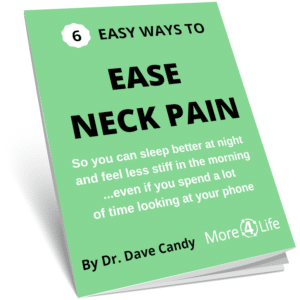
Exercises To Avoid With Degenerative Disc Disease In Neck
Avoid Neck Extension Exercises
Similarly to the last tip, avoid exercises where you look up to the ceiling as far as you can. This just further compresses the joints and nerves in your neck and usually doesn't help improve range of motion.
Instead, try doing stretches where you bring your chin toward your chest can help
Avoid Overstretching To The Side
When you tip your head to one side it compresses the joints on that side and opens the joints on the opposite side.
That means stretching too far to either side is a BAD idea.
Likewise, if only one side of your neck hurts, avoid stretching toward the painful side side.
Instead, do stretches where you tip your head AWAY from the painful side. Just don't stretch too far.
When To Get Help For Degenerative Disc Disease
Hopefully this post has given you some peace of mind that you likely will not become paralyzed from degenerative disc disease.
However, that doesn't mean that it's not important to get treatment. It's particularly important to get treatment for degenerative disc disease if you have symptoms that are radiating into your arm or leg.
Need Help For Degenerative Discs Disease?
Click the button below to request an appointment with one of our specialists.
Look What Others Are Saying About How We've Helped Them
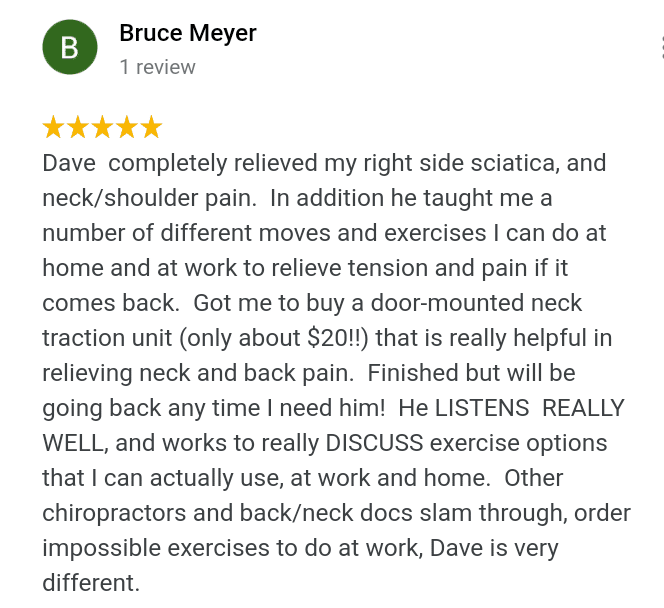
P.S. Here's the over-the-door neck traction unit mentioned in the review above. Traction units can help relieve symptoms of degenerative disc disease.

